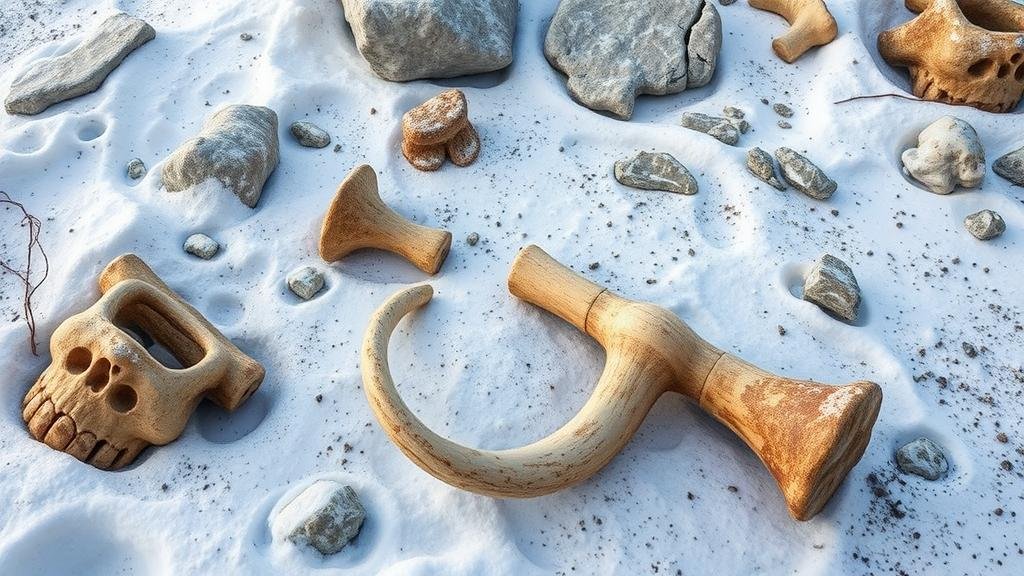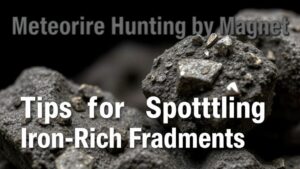Discovering fossilized mammoth bones in the frozen tundras of Alaska, revealing Ice Age ecosystems.
Discovering Fossilized Mammoth Bones in the Frozen Tundras of Alaska
The frozen tundras of Alaska have long captivated scientists and enthusiasts alike, revealing treasures from an era long past. Among these treasures are fossilized mammoth bones, which serve as crucial links to understanding Ice Age ecosystems. For rockhounds and mineral collectors, the allure of these significant finds is not only to appreciate their beauty but also to unlock the stories they tell about Earths climatic history and prehistoric life.
The Significance of Mammoth Fossils
Mammoths were large elephant-like creatures that roamed across the northern latitudes during the last Ice Age, approximately 300,000 to 10,000 years ago. discovery of mammoth fossils provides insights into the biodiversity and climate of the period. According to paleontologists, the remarkably well-preserved specimens unearthed in Alaska indicate that these animals adapted to cold environments, showcasing traits such as thick fur, large tusks, and a stocky body to conserve heat.
One notable site is located in the Fairbanks region, where remains of mammoths have been extensively studied. For example, in 2013, a well-preserved mammoth tusk was found, measuring over 10 feet long, shedding light on the size and age of these magnificent creatures–estimated to be around 25,000 years old.
Uncovering Ice Age Ecosystems
The presence of mammoth remains allows scientists to reconstruct the ecosystems of the Ice Age. Through isotopic analysis of the bones and teeth, researchers can infer the diets of these animals, revealing that they primarily consumed grasses, shrubs, and other vegetation that thrived in the tundras cold climate.
Fossils often reveal the interconnection of species existing within these ecosystems. For example, mammoths cohabitated with other Ice Age megafauna, such as saber-toothed cats and giant ground sloths. Each discovery paints a complex picture of predator-prey relationships and competition for resources.
Implications for Rockhounds and Mineral Collectors
For rockhounds and mineral collectors, the allure of fossilized mammoth bones goes beyond mere aesthetics. e relics have significant scientific value and can enhance personal collections through unique educational aspects. Here are several reasons why mammoth fossils are of particular interest:
- Historical Context: Possessing a fossil allows collectors to own a piece of Earths history, representing a specific era that has shaped modern biodiversity.
- Unique Features: Fossials often exhibit intricate textures and patterns, making them visually striking and unique specimens.
- Research Opportunities: Collectors can contribute to ongoing research by sharing findings and engaging with scientists interested in studying these ancient remains.
Practical Tips for Collectors
For those looking to start a collection or enhance their existing one with mammoth fossils, consider the following practical tips:
- Location Research: Investigate sites in Alaska or other regions where ice-age fossils are found. The Fairbanks area, in particular, is known for significant mammoth discoveries.
- Documentation: Ensure that any fossils acquired are legally obtained and properly documented. Having provenance can increase the value and importance of the specimen.
- Preservation: Store fossil specimens in conditions that prevent degradation. Avoid exposure to sunlight and humidity, which can damage delicate materials.
Conclusion
Discovering fossilized mammoth bones in Alaskas frozen tundras opens a captivating window into Earth’s ancient past. For rockhounds and mineral collectors, these finds offer not only aesthetic appeal but also educational significance, connecting us to an era of colossal creatures and complex ecosystems. By understanding the importance of these fossils, collectors can contribute to the preservation of history while enriching their personal collections.



